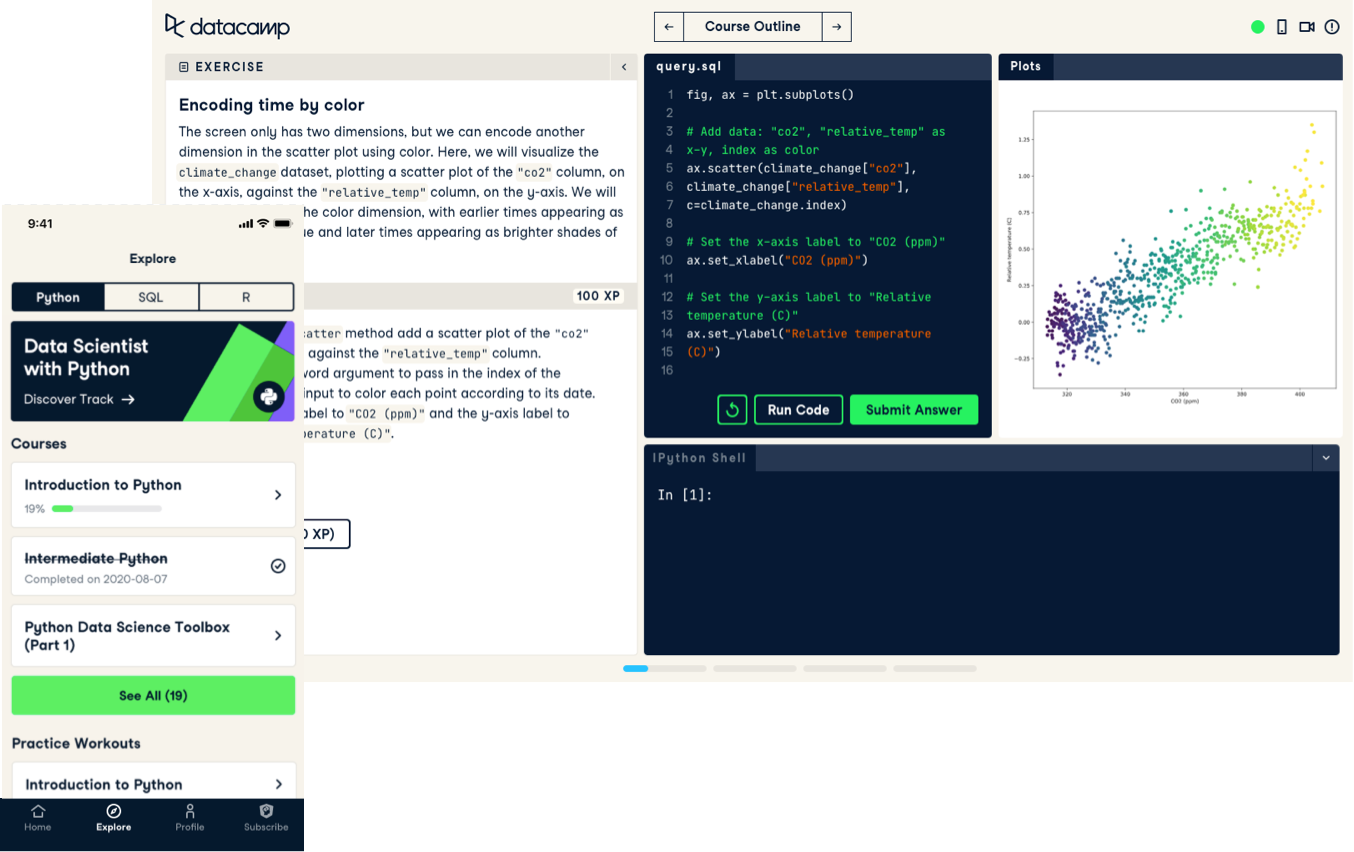Case Study: Supply Chain Analytics in Power BI
Learn how to use Power BI for supply chain analytics in this case study. Create a make vs. buy analysis tool, calculate costs, and analyze production volumes.
Siga vídeos curtos conduzidos por instrutores especializados e pratique o que aprendeu com exercícios interativos em seu navegador.

Learn how to use Power BI for supply chain analytics in this case study. Create a make vs. buy analysis tool, calculate costs, and analyze production volumes.
Become an expert in fitting ARIMA (autoregressive integrated moving average) models to time series data using R.
Develop a strong intuition for how hierarchical and k-means clustering work and learn how to apply them to extract insights from your data.
Learn to manipulate and analyze flexibly structured data with MongoDB.
Learn what Bayesian data analysis is, how it works, and why it is a useful tool to have in your data science toolbox.
Explore the Stanford Open Policing Project dataset and analyze the impact of gender on police behavior using pandas.
Learn how to ensure clean data entry and build dynamic dashboards to display your marketing data.
Learn how to segment customers in Python.
Learn to work with time-to-event data. The event may be death or finding a job after unemployment. Learn to estimate, visualize, and interpret survival models!
Learn how to efficiently collect and download data from any website using R.
Learn survey design using common design structures followed by visualizing and analyzing survey results.
Explore o Controle de Versão de Dados para gestão de dados de ML. Configure, automatize e avalie modelos.
Dive into our Tableau case study on supply chain analytics. Tackle shipment, inventory management, and dashboard creation to drive business improvements.
This Power BI case study follows a real-world business use case where you will apply the concepts of ETL and visualization.
Learn to streamline your machine learning workflows with tidymodels.
Learn to read, explore, and manipulate spatial data then use your skills to create informative maps using R.
Learn how to access financial data from local files as well as from internet sources.
Step into the role of CFO and learn how to advise a board of directors on key metrics while building a financial forecast.
Learn how to use Python to analyze customer churn and build a model to predict it.
Learn the basics of cash flow valuation, work with human mortality data and build life insurance products in R.
Develop the skills you need to clean raw data and transform it into accurate insights.
Learn to write scripts that will catch and handle errors and control for multiple operations happening at once.
In ecommerce, increasing sales and reducing costs are key. Analyze data from an online pet supply company using Power BI.
From customer lifetime value, predicting churn to segmentation - learn and implement Machine Learning use cases for Marketing in Python.
Apply statistical modeling in a real-life setting using logistic regression and decision trees to model credit risk.
Learn how bonds work and how to price them and assess some of their risks using the numpy and numpy-financial packages.
In this course, you’ll learn to classify, treat and analyze time series; an absolute must, if you’re serious about stepping up as an analytics professional.
Learn how to design and implement triggers in SQL Server using real-world examples.
Leverage tidyr and purrr packages in the tidyverse to generate, explore, and evaluate machine learning models.
Learn how to build a model to automatically classify items in a school budget.